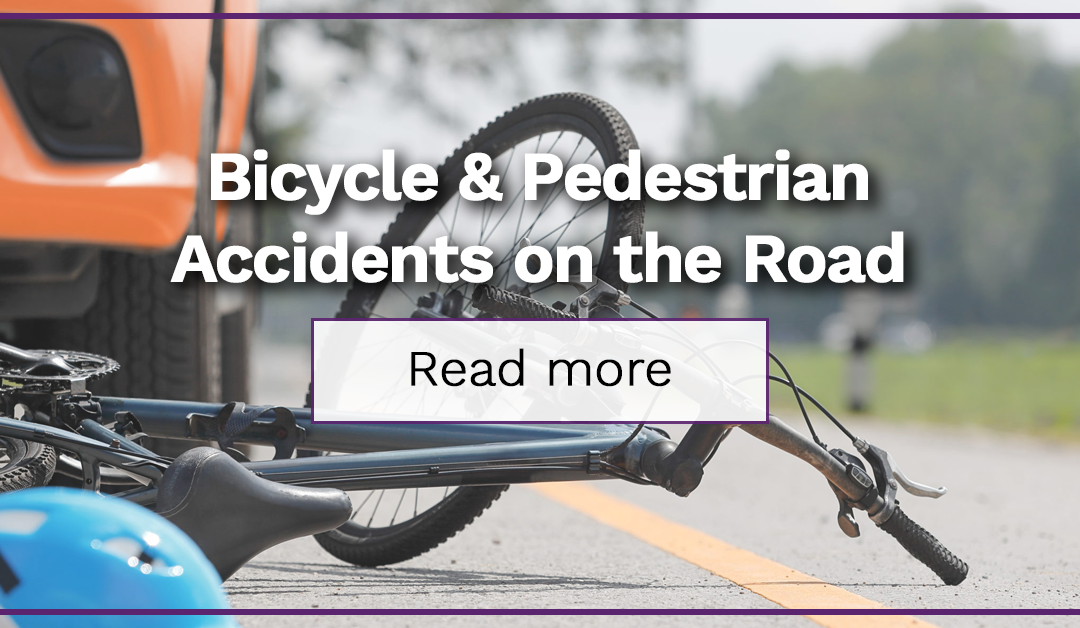In the bustling mosaic of urban life, bicycles and pedestrians share the intricate tapestry of roads and sidewalks with vehicular traffic. However, despite efforts to promote safety and awareness, accidents involving cyclists and pedestrians continue to occur with alarming frequency. Understanding the dynamics of these incidents is crucial for fostering a safer environment for all road users. In this blog, we delve into the causes, consequences, and preventive measures surrounding bicycle and pedestrian accidents.
Causes of Bicycle and Pedestrian Accidents:
- Lack of Visibility: One of the leading causes of accidents involving cyclists and pedestrians is poor visibility. Inadequate lighting, obscured sightlines, and inclement weather can compromise visibility, increasing the likelihood of collisions.
- Distracted Driving and Walking: The pervasive presence of smartphones and other electronic devices has contributed to a rise in distracted driving and walking. Diverted attention significantly impairs reaction times and awareness, heightening the risk of accidents.
- Failure to Yield: Both motorists and cyclists failing to yield the right of way at intersections and crosswalks can lead to dangerous collisions. Neglecting traffic signals and signs exacerbates the risk of accidents.
- Infrastructure Deficiencies: Inadequate bicycle lanes, poorly maintained sidewalks, and insufficient signage pose significant hazards to cyclists and pedestrians, increasing the likelihood of accidents.
- Speeding and Reckless Behavior: Excessive speed and reckless maneuvers by motorists and cyclists pose a grave threat to pedestrian safety. High-speed collisions can result in severe injuries or fatalities.
Consequences of Bicycle and Pedestrian Accidents:
- Physical Injuries: Bicycle and pedestrian accidents often result in a spectrum of injuries, ranging from minor bruises to catastrophic trauma. Fractures, head injuries, spinal cord damage, and soft tissue injuries are among the common consequences.
- Emotional Trauma: Survivors of bicycle and pedestrian accidents may experience profound emotional trauma, including post-traumatic stress disorder (PTSD), anxiety, and depression. Witnessing or being involved in a traumatic incident can have lasting psychological effects.
- Financial Burden: The financial ramifications of bicycle and pedestrian accidents can be substantial, encompassing medical expenses, rehabilitation costs, lost income, and property damage. Long-term disabilities may necessitate ongoing medical care and support services, further exacerbating the financial burden.
- Legal Complexities: Navigating the legal aftermath of bicycle and pedestrian accidents can be intricate and daunting. Determining liability, negotiating settlements, and advocating for fair compensation require expertise and resources.
Preventive Measures:
- Education and Awareness: Promoting education and awareness campaigns targeting motorists, cyclists, and pedestrians is essential for fostering a culture of safety and mutual respect on the roads.
- Infrastructure Improvements: Investing in infrastructure improvements, such as dedicated bicycle lanes, pedestrian-friendly pathways, and enhanced signage, can mitigate the risk of accidents and create a safer environment for all road users.
- Enforcing Traffic Laws: Strict enforcement of traffic laws, including speed limits, right-of-way rules, and distracted driving ordinances, is paramount for deterring reckless behavior and promoting adherence to road safety regulations.
- Technology Integration: Embracing technological innovations, such as vehicle collision avoidance systems, pedestrian detection technology, and smartphone apps for navigation and safety alerts, can augment efforts to prevent accidents and mitigate their severity.
- Community Engagement: Engaging local communities, advocacy groups, and stakeholders in collaborative initiatives aimed at improving road safety can yield meaningful results. Encouraging participation in neighborhood watch programs and community policing initiatives can enhance vigilance and promote a sense of collective responsibility.
Spreading Awareness
Bicycle and pedestrian accidents represent a multifaceted challenge that necessitates a comprehensive approach encompassing education, infrastructure improvements, enforcement, technology integration, and community engagement. By addressing the underlying causes and implementing preventive measures, we can strive towards creating safer streets and fostering a culture of mutual respect and responsibility among all road users. Together, we can navigate towards a future where bicycle and pedestrian accidents are minimized, and our communities thrive in safety and harmony.

Recent Comments